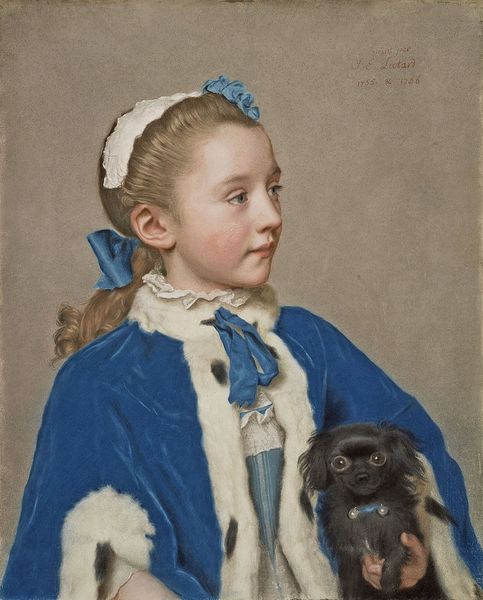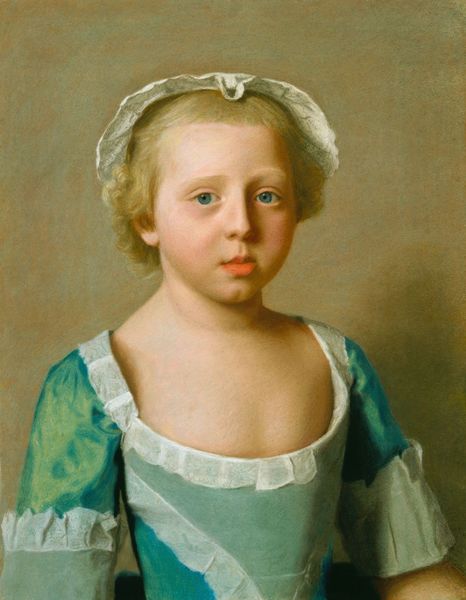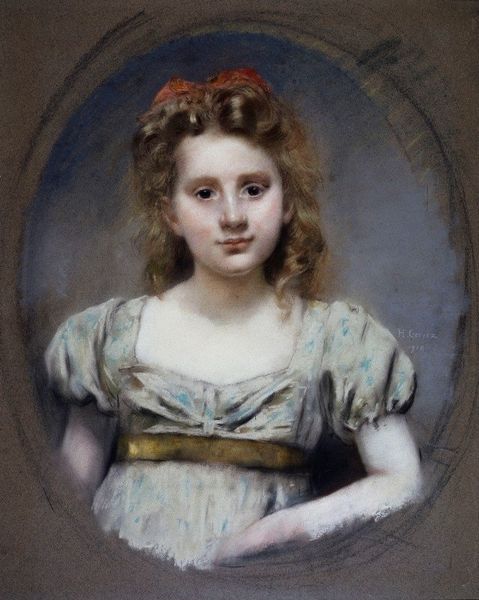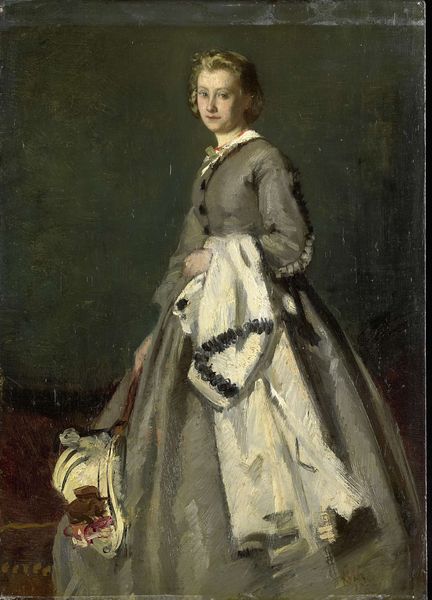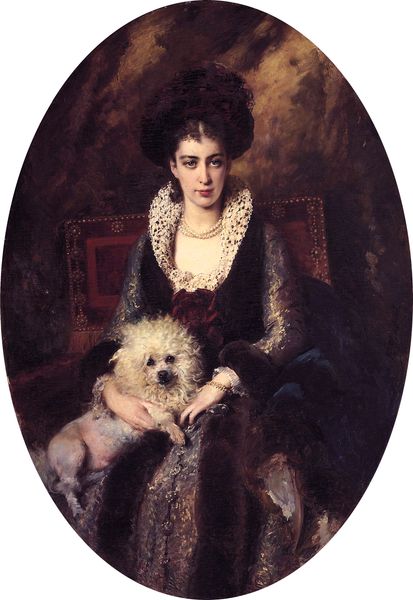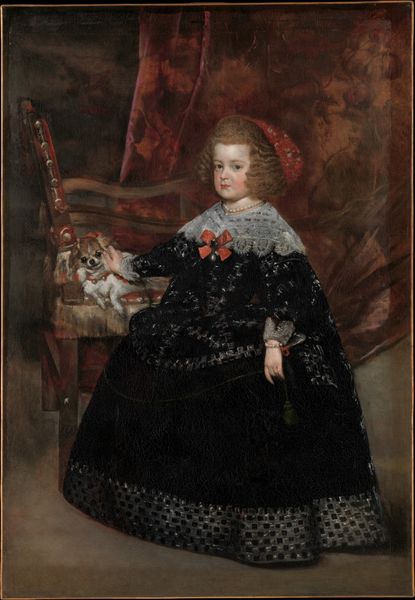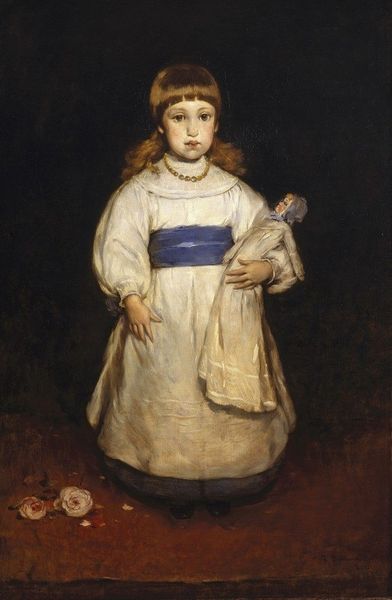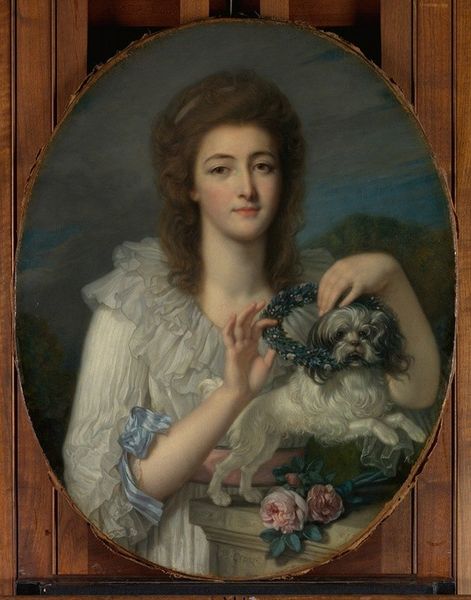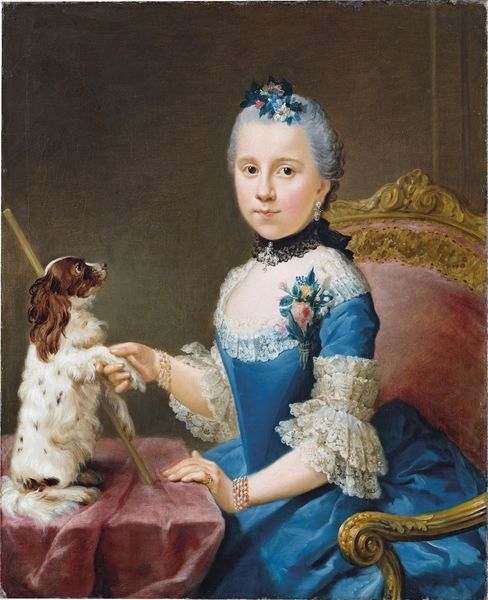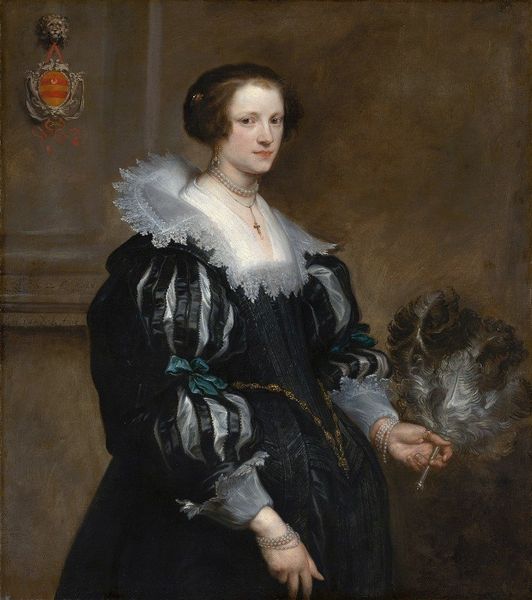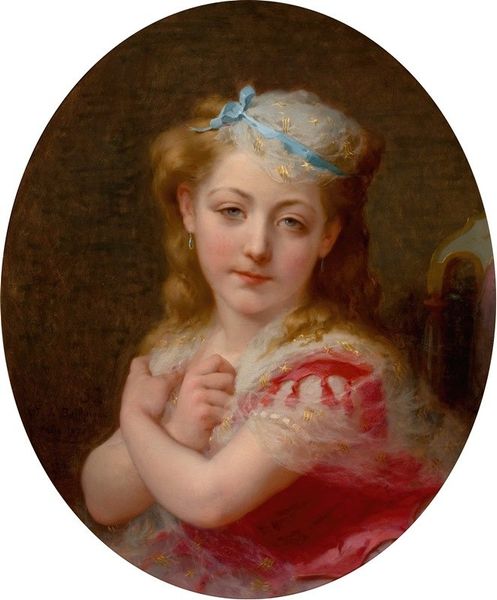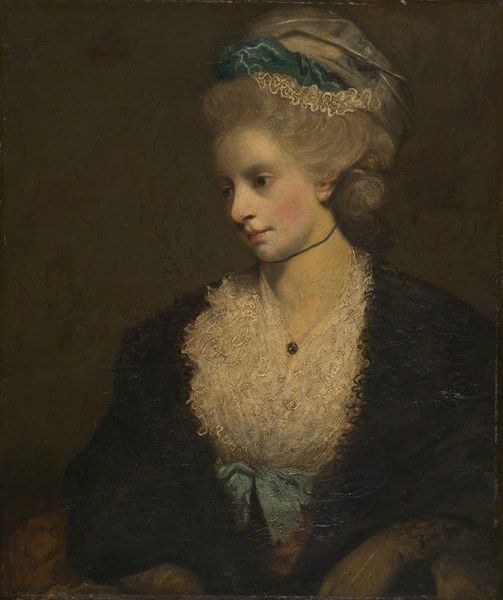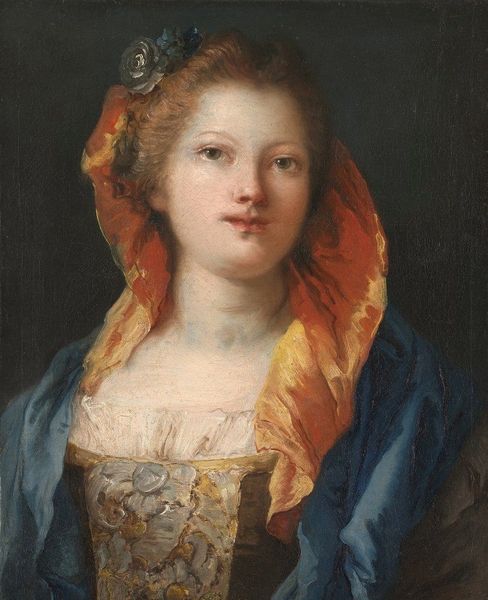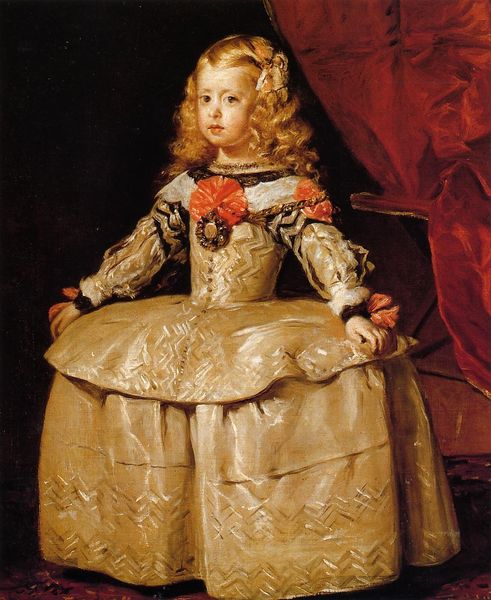
Copyright: Public Domain: Artvee
Curator: Joshua Reynolds painted this portrait, titled "Miss Beatrix Lister," in 1765. Editor: It strikes me as an exercise in contrasts – dark fabric against soft skin, the stiffness of the dress offset by the fluffy dog. What do you make of its visual language? Curator: The visual language speaks volumes about the intersection of class and gender in 18th-century Britain. The portrait embodies the Rococo style, with its emphasis on elegance and refined detail, all serving to reinforce Miss Lister's status within a rigid social hierarchy. Editor: Let’s not forget the material realities here: Reynolds uses oil paint to depict the luxurious fabrics, the intricate lace, even the texture of the little dog's fur. There's a tangible quality to it all. Think about the labor involved, from sourcing the pigments to weaving the fabrics and training a lapdog, of course. Curator: Precisely. Consider too the implications of Beatrix's youth; the portrait isn’t just a likeness. It’s a carefully constructed image, meant to project virtue, innocence, and lineage in a world that severely limited the agency of women like her. Her gaze is open, inviting, and compliant. She has all of the qualities deemed "appropriate" for women in 1765, when she likely commissioned this piece with the hope of landing an eligible husband. Editor: The small Maltese held in her arms reads almost like another fashionable accessory. Reflecting on materials again, look at how Reynolds uses oil paints to highlight the differing textiles to give it texture and depth. This portrait reveals, consciously or not, the relationship between people, things, labor and representation. Curator: This is exactly the dynamic tension that makes the piece so compelling. On one level, it’s simply a display of wealth. But the nuances also invite deeper reflection about the roles assigned, and the constraints imposed. I’m intrigued to imagine the identity this sitter had. Editor: And with art as with many other things, understanding materials, manufacture and circulation routes becomes vital for understanding the broader social structure within which it existed. I agree it all compels me to think about the making of identities under various forces.
Comments
No comments
Be the first to comment and join the conversation on the ultimate creative platform.
